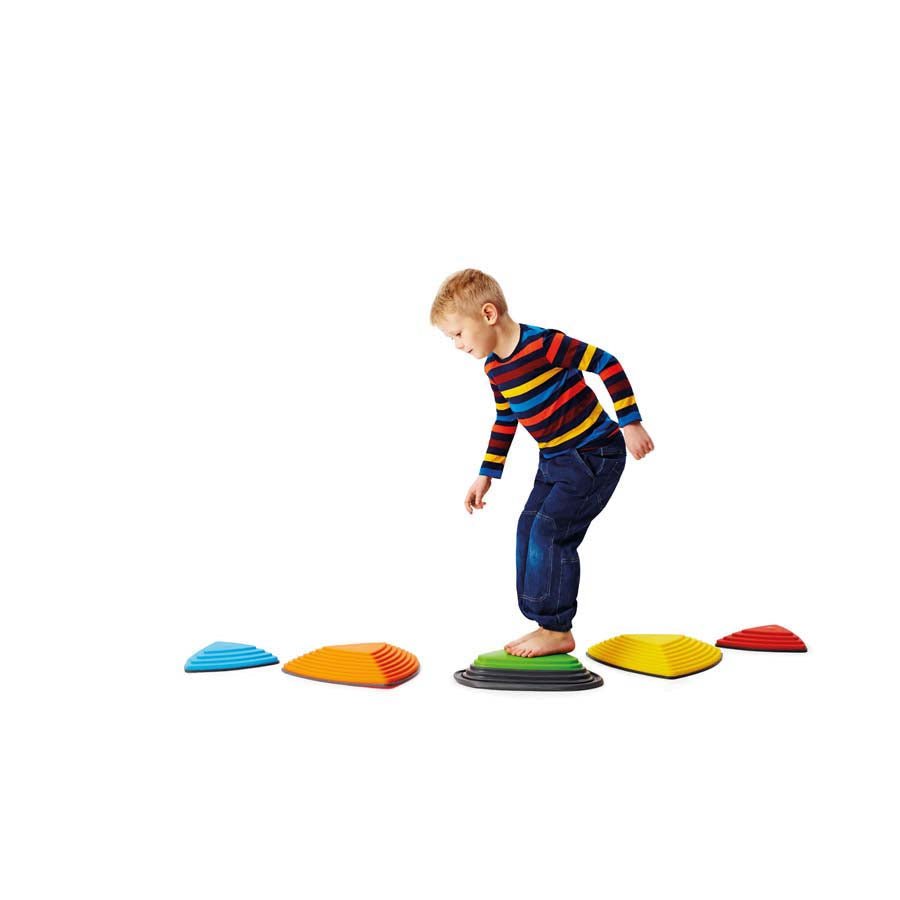Profile Education
Bouncing River Stone - Single or Set of 5
Bouncing River Stone - Single or Set of 5
SKU:JR32583
- Estimated Lead Time 2 Weeks
Couldn't load pickup availability
This new version of the River Stone features a soft base and a hard-top platform supported by three strong steel springs to enable bouncing. Stepping and jumping on the Bouncing River Stone is more physically challenging as bouncing requires adjustment through the ankles and legs, which strengthens the proprioceptive sense. The Bouncing River Stone can be used on its own for special motor training activities or together with River Stones to provide even more play possibilities. From 2 years.
- The Bouncing River Stone can be used on its own for special motor training activities or together with River Stones to provide even more play possibilities.
-
Pack Size:
- Single Bouncing Stone or,
- Set of 5 (4 x River Stones & 1 x Bouncing River Stone)
- River Stone Dimensions: H100 x W370 x D370mm
- River Stone Set Dimensions: H180 x W370 x D370mm
- Recommended age: 2-15years
Jumping is a universal motor skill. Every child that is not severely handicapped develops the ability to jump during childhood.
Jump development:
A jump is a complex movement that most children learn, when they are 12-36 months old.
It is a counter movement. The child must first flex at the hip and knee to achieve and sense the force of a rapid upward movement and then straighten at the hip and knee to ensure that his/her feet leave the ground. The upward movement is more forceful, if the child swings his/her arms at the same time.
To begin with the child will not have sufficient balance for both feet to leave the ground simultaneously. The jump is more like a gallop. The hovering phase is curtailed, because the feet do not take off and land at the same time.
In a proper jump, the feet leave the ground simultaneously, then there is a hover phase and a landing with both feet together.
Normal jump development is as follows:
- jump down from an object (doorstep, stair, kerb or similar)
- jump up and down on the spot
- jump forwards
- jump up onto an object e.g. from the floor onto a cushion
- jump backwards
- jump over an object.
Children who overreact to vestibular stimulation have difficulty learning to jump. They are afraid of losing their balance and dare not attempt a jump, in which both feet leave the ground at once.
The vestibular centres of the brain are closely linked to happiness. If children are happy, they jump and dance around. If we get vestibular stimulation via jumping and dance, we feel happy.
This means that in addition to being a motor skill jumping is also one of the ways we communicate clearly and non-verbally that we are alive and happy.
Such stimulation is termed "passive" when the child does not stimulate himself/herself but someone else offers the stimulation and the child can focus on responding to it.
Gentle vestibular stimulation affects both physical and mental equilibrium. It can help us to find peace at both levels.
We observe that people all over the world who are in deep mourning or frustration automatically rock to and fro to calm themselves and restore equilibrium. If we seek to console someone in mourning, we will often cuddle and cradle them gently in our arms as if we were consoling a child.
Share











